Nokia N-Gage
Rob takes a look at a couple of finished N-Gage consoles.
The road to being a platform holder in the games industry is never an easy one. Altogether too many times in the past, consumer electronics companies have entered this industry with plans of dominance, and then run off with their tail between their legs - Matsushita's M2 never saw the light of day, Philips' CD-I decks were an expensive failure, and the less said about the Nuon the better. For every Sony PlayStation, there are five noble (or indeed ignoble) failures gathering dust under the TV of history.
Microsoft could tell you how difficult it is to be taken seriously any more as a competitor in the games industry. The Xbox was a whipping boy for the games media, and indeed for many gamers, right up until the launch of the console and beyond - with Microsoft being accused, not entirely without reason, of simply relying on its bags of cash to ensure success.
Right now, Nokia is probably feeling roughly the same pains that Microsoft felt prior to the launch of Xbox - and possibly taking heart from the success of Xbox in the intervening years. With a global console launch scheduled for October 7th, Nokia's N-Gage still has a battle for hearts, minds and wallets ahead of it, and the company has made many of the classic mistakes we all watched Microsoft make in the early days of the Xbox project. In Microsoft's case, one disastrously bad E3 showing was enough to convince the company to rethink much of its approach and put the console back on track. Disastrous is a word many people would have applied to Nokia's E3 conference back in May - but whether the company has changed anything in response remains to be seen.
With the launch of the N-Gage less than a month away, now is judgement time. We've finally had a chance to use a couple of N-Gage consoles "in the field", as it were - playing a variety of games and experimenting with the functionality of the devices in real-life situations. We brought them on the train, played games on the Underground, made phonecalls from the pub, and played wireless multiplayer games on the way home after a night out. The hardware we tested with was final; this is the N-Gage that will land into your hands come October 7th. The software, however, was not - although the games we played with were close to completion, neither they nor the device's own operating system was 100% finished, so this has been taken into account in this hands-on test.
First Impressions

Although we've played with the N-Gage before at trade shows and press events, we were still struck by the size of the device when we took it out of its box for the first time. It looks and feels like a Game Boy Advance on a diet, and although it's large by modern mobile phone standards, it fits comfortably in an average trouser pocket and is light enough to carry around comfortably. To look at, it's an attractive piece of technology - curvaceous and shiny, it's got a fashionable "high tech" feel about it which contrasts strongly with the original GBA design, if less so with the new clamshell GBA SP.
So Nokia certainly scores on one point - even the most fashion conscious probably won't mind carrying this device around with them. However, they might object to making phonecalls on it - because we quickly discovered that talking into the device involves holding the top end of it to your face (the microphone and speaker are located where the L and R buttons are on a GBA), which quite frankly makes you look utterly ridiculous. We're not sure which design genius at Nokia decided that people think it's cool to look like you have a Frisbee embedded in your head - but we were soon to learn that it's not the only mistake he made with the basic design of the deck.
The operating system on the N-Gage is a modified version of the Symbian OS found in all of the Nokia Series 60 phones, and as such it's a very competent and easy to use piece of software. Our intention here isn't to review the device as a mobile phone, but it would be silly to review a multi-function device without commenting on all of the functionality - so it's worth saying that in terms of phones, this one is a very competent implementation of the technology, with a well designed menu layout, good contact book, text messaging and email support, and the usual host of extra functions you expect from a modern phone, like polyphonic (or indeed MP3) ringtones and calendar functions.
Accident Of Design?
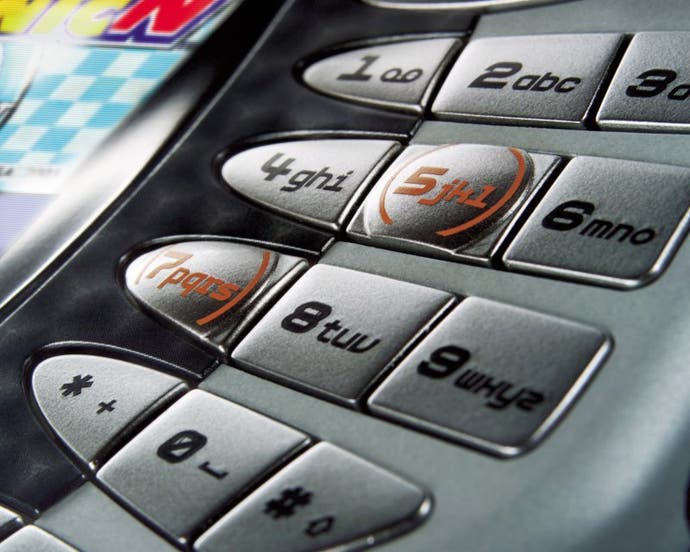
We did however notice a few omissions here - for a start, the fact that nowhere on the device is there an indicator light for the Bluetooth communications, a glaring oversight which caused grief in games as well as in general usage. Nokia seems to assume that everyone wants to leave their phone on Bluetooth "discoverable" mode at all times - but frankly, given the fact that the protocol is completely insecure, we'd really rather not, and it would be nice to have an LED to show us what the status is at any given time.
Another problem we noticed was that menus are generally meant to be navigated by moving around with the directional pad and then clicking down on it to select - a reasonable way of doing things, if clicking on the d-pad wasn't so difficult, usually resulting in moving the cursor off the item you're trying to select. Strangely, Nokia also seems to have reversed the normal functions of the soft keys on the bottom left and right of the screen, so that the left one (under the d-pad) now selects, and the right one exits or goes back; which is not only unintuitive, but quite annoying since it means that selecting menu items (without the useless d-pad click) means taking your fingers off the d-pad.
Aside from the game and phone functions, the N-Gage also has a built in MP3 player and a radio. On the topic of the radio, there's not a lot to say other than that it works; reception is excellent for a device of this size, and it sports all the functions you'd expect from a digital radio, such as auto-seeking and the ability to store station presets. The MP3 player is a rather less impressive beast - while the audio reproduction through headphones is good, the onscreen controls are fairly clunky and primitive compared with decent standalone MP3 players. We imagine that most music management is meant to be done through Nokia's PC link software, but since we were unable to get that working (presumably something that will be fixed in the final version of the device), we couldn't verify that. It's also quite disappointing that in order to use MP3 playback, you need a blank MMC card in the device - so you can't listen to your own MP3s and play games at the same time.
Let's Play Some Games
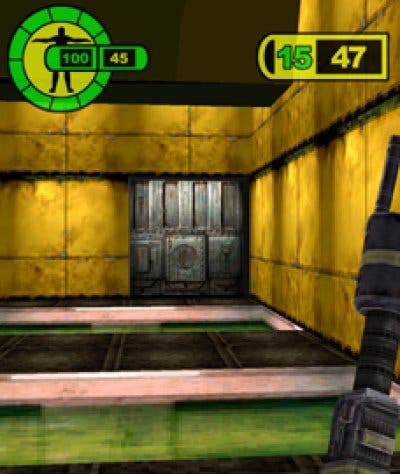
Enough messing around with the other functions of the N-Gage - it's time to play some games. Unfortunately, the decision to play a game reveals one of the most fundamental flaws in the design of the deck - one which we highlighted months ago at the official unveiling of the system in London, and which hasn't been improved upon since then. In order to put a game into the system, you have to: turn the phone off, take the back cover off, remove the battery, slide out the existing game, put the new one in, put the battery back in, replace the back cover, hold down the power button for several seconds, wait for the system to boot up, open the main menu, select the game, open it... And then your game starts loading.
As a process for changing games in a game console, this is an absolutely unforgivable design flaw on a number of levels. At its most basic level, it means that the time from deciding that you'd like to play a game to seeing the boot screen for that game is long - at least a minute, and probably more. More annoyingly, it involves juggling a total of five components in order to swap cartridges - difficult enough when you're sat down on your sofa, but an absolute nightmare if you're stood up on a train, or in a cramped position like an airline seat. These problems are only compounded by the fact that game cartridges themselves are tiny SD cards, around the size of a postage stamp and not much thicker. Drop one on the floor, and you're probably going to be crawling around on your hands and knees looking for it like a contact lens.
These problems aside - and we hate to dwell on them, but this really is appallingly poor design - we discovered other issues on our quest to play a game on the N-Gage, one of the major ones being the load delays on the system. Yes - load delays. Large ones, in fact, well into the region of ten seconds or more in some instances. This isn't something we'd even considered encountering on a handheld gaming device - after all, the Game Boy Advance, another solid state console, has no appreciable load delays whatsoever, so returning to PlayStation-era loading screens on the N-Gage feels like a massive step backwards.
Son et Lumiere
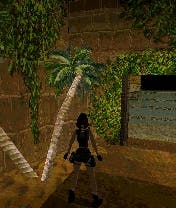
Once through the loading screens, we hit another snag. The N-Gage started playing music at us, very loudly indeed - which is a good thing in some circumstances, and it's nice to note that the system has an excellent internal speaker which reproduces sound very clearly for a mobile device. However, in this instance we found ourselves reaching for the volume control - only to discover that there isn't one, and that volume has to be adjusted using internal software menus on the games. The unit does, however, come supplied with a decent pair of headphones and hands-free kit - although we noticed that there's no normal 3.5mm jack for standard headphones on the deck, and you'll need to use the bundled adapter cable to plug in your own third party cans.
One area which did impress us, though, was the quality of the screen on the device. Crystal clear and perfectly backlit, it shows up even the screen on the GBA SP as being dark and uneven - the N-Gage, by comparison, has superb resolution, a consistently bright display and excellent colour contrast. Nintendo would do well to learn a lesson on how to build a screen for a mobile device from Nokia, even if the N-Gage screen could admittedly do with being about twice as wide as it is currently - putting it side by side with a GBA proves that the N-Gage has a display almost exactly half the size of a GBA screen.
Once into the games themselves, the high quality screen shows off graphics which are definitely far ahead of anything accomplished so far on a mobile platform. The best comparison here is with early PSone titles - perhaps unsurprisingly, since many of the first games to appear on the N-Gage are actually ports of early PlayStation games. Proper 3D graphics on a handheld certainly has novelty value, although we do wonder why Nokia chose not to put something like ATI's mobile 3D graphics chip into the N-Gage - a solution which would have vastly boosted the power of the system, and done away with the occasional ugly jaggy or wobbly polygon resulting from the software 3D rendering in the device.
The inclusion of a dedicated 3D chip would also have eliminated the framerate problems which plagued a number of the games we tested on the unit. Although it's certainly not suffering as badly from framerate problems as was suggested by the console's showing at E3 in May, many of the games still suffer badly whenever the action becomes hectic - leading to the slightly worrying prospect that by pushing the system as a true 3D platform, Nokia may be trying to make its developers squeeze blood from a stone. Later games will inevitably improve the performance, but the N-Gage certainly struggles to keep some of its launch titles running smoothly.
Control Freak
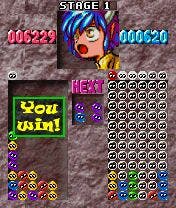
The control layout of the console is absolutely vital, and one thing the N-Gage can't be accused of (as the GBA was when it arrived) is lacking buttons. The front of the unit looks like an explosion in a button factory - it's covered in all the navigation buttons a mobile phone needs, most of which can be configured to work in games as well. A lot of games do actually offer key configuration options, which is a nice touch on a system with this many buttons available to you. However, we're a little perplexed at the decision not to include L and R shoulder buttons on the unit, which seems perfectly designed for them.
Crucially, the d-pad on the system is very comfortable to use, perhaps even more so than the pad on the GBA; it rocks back and forth easily under your thumb and provides good, clicky tactile feedback in games. We were also pleased to note that one of our bugbears with the unit from playing it at trade shows - namely the ease with which you can accidentally slip your finger onto the wrong button on the numeric keypad - actually evaporates after a couple of hours of getting used to the deck. The other chief concern, that the unit wouldn't be comfortable to hold for extended periods of time, also proved untrue - the N-Gage is very ergonomically designed and the controls are a pleasure to use even over lengthy playing times.
However, the control layout isn't without its downsides, and we noticed that Nokia seems to have had trouble getting developers to obey a consistent set of rules for the button layouts. Gamers used to the GBA will find themselves instinctively pressing "5" in order to navigate through menus, and while some games support this, others - such as Moto GP - insist on using the softkeys at the bottom of the screen to select or go back, just like in the phone menus.
Most of all, though, there is one hugely significant problem with the N-Gage controls which we believe will seriously limit the types of game which can be played on the device - namely the complete lack of any analogue controls. Admittedly the GBA also only has a digital pad, but it's not designed as a 3D console - the N-Gage most certainly is. Sony's forthcoming PlayStation Portable, also a powerful 3D device, will feature analogue controls - demonstrating as well as anything the gulf between the understanding of the games market at SCEE and at Nokia.
Analogue controls are absolutely essential for the majority of 3D games; there's a very good reason why the same generation of consoles that introduced proper 3D for the first time also brought with it widespread use of analogue controllers (Nintendo's N64 pad, Sony's Dual Shock, Sega's 3D Controller). Playing games like Tony Hawks Pro Skater and MotoGP with a d-pad is certainly doable, but the level of control you get never feels precise in any way, and more complex 3D games will simply be impossible with this level of control. The difficulty of controlling a 3D game with a digital pad is only compounded by the occasionally poor framerate, which can render games completely uncontrollable until the framerate settles down again.
Quality Control
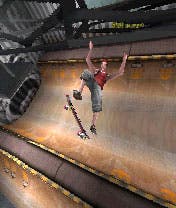
Speaking of the 3D games, we have to say that we're generally impressed with the quality of the launch software for the device. Nokia's focus on 3D games may not be doing the system any favours in some ways, but there's no doubt that several of the launch games are hugely impressive on a handheld - and although there's no obvious killer app in here, there are quite a few games we'd like to play.
Tony Hawk's Pro Skater is likely to be seen as the main pillar of the N-Gages software line up, and for good reason. The game is a solid conversion of the PSone original, and although it therefore lacks many of the refinements of later games in the series, it's still quite a lot of fun to play. We were a little concerned over the controls - see our concerns about digital rather than analogue input above - which can make it quite difficult to line up for certain tricks and jumps. However, the game is elevated by good level design and some absolutely inspired multiplayer, which features a host of great head to head options that will keep players entertained for hours. It's not immediately accessible due to the need to learn tricks, but this proved by far the most played of the multiplayer games on offer during our test of the device.
The other multiplayer game was Moto GP, which is very easy to start playing - the only controls are left and right, accelerate and brake, so it's hardly rocket science. Nonetheless, it's quite good fun to play, and the range of tracks, bikes and weather on offer adds a certain amount of longevity - but not very much, we have to say. There's simply not a lot to do in this game, and while four-player games are entertaining, we can't see this one being a keeper. The addition of a track editor, however, does make things a bit more interesting.
On the single-player front, Pandemonium provides the console with a fairly competent 2.5d platform game, albeit one which was frankly a lot better on the PSone. The game is entertaining in its own way, but we can't see this being a full price purchase on any platform - frankly, the controls are a little dodgy, the graphics are good technically but relatively uninspired, and the gameplay doesn't offer a great deal of variety. The GBA has a superb line-up of platformers, and even with the 3D advantage, the N-Gage has a lot of catching up to do in this department if Pandemonium is the best it has to offer.
Last but certainly not least out of the games we were given to try out is Tomb Raider. Forget the terrible PS2 game and the eye-wateringly dreadful summer movie; this is the original Tomb Raider, ported very faithfully indeed to the N-Gage with, as far as we can gather, only relatively minor changes. After all these years, this is still arguably the best Tomb Raider game, and it was certainly the one that anyone who played on the N-Gage wanted to spend most time with. Revisiting a classic doesn't exactly equate to a killer app for a console, but as single-player titles on the N-Gage go, this is as close as it gets right now. We were also delighted to notice that the developers have added a good "save anywhere" system to the game - essential for a mobile game, and apparently lacking from Pandemonium...
Over To The Jury
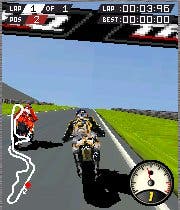
Our opinions aren't the only ones we canvassed, however - so with N-Gages in hand (er, pocket), we brought Nokia's latest out on the town to toast its arrival (and drown our sorrows over the Ireland vs Russia football match, but the less said about that the better).
There's no doubt that people love new gadgets, and the N-Gage attracted plenty of attention - people were keen to try the games, and intrigued by the concept of a combined phone and game console. Tony Hawk and Lara Croft were the undoubted favourite titles - but people were less impressed with the component-juggling required to change game cartridges.
Wireless multiplayer was a huge hit, however, and Nokia may certainly have a winner on its hands with the Bluetooth functionality on the device. While most people we spoke to weren't massively interested in the ability to upload high scores or race against ghost cars - "I might use it a couple of times as a novelty," one man told us, summing up the feelings of most of those we spoke to - the local wireless play was definitely a big draw for the device.
"I'd never play against anyone else on a GameBoy because of having to connect up a wire for it," explained one player, "but this looks like something you could just do on a whim on the train or something."
What didn't impress the image conscious pub crowd, however, was how the device looks when you make a phone call on it. "It looks like you've got a taco held to your ear," laughed one woman, while another man likened it to a croissant. Others were more blunt - "it makes you look like a twat" being a comment we heard a lot on this particular topic. This may cause headaches for Nokia when it comes to selling the device to the crucial 18-35 demographic - a grouping of people not known for being fond of things that make them look foolish...
Speaking of headaches, our night on the town revealed another major problem with the N-Gage which may, sadly, be insurmountable - namely that quite a few people reported that playing on the device for more than a few minutes gave them sore eyes or a headache. One woman told us that she had to stop playing Tomb Raider after less than fifteen minutes because if gave her a serious headache and a throbbing sensation behind her eyes; "I was really enjoying the game, but I couldn't play it if it's going to cause that every time," she explained.
We can't really speculate on what causes this problem (which we did experience ourselves - I personally found that the device gave serious eye-strain, but originally attributed this to the fact that I'm a contact lens wearer), but it may well be that shoehorning 3D graphics onto a diminutive screen like this just isn't good for people's eyes - forcing them to squint to focus and make out detail on the screen. If so, this is a very serious design flaw with the system.
Ultimately, most of those who tried out the N-Gage opined that while it's an interesting device, they can't see themselves purchasing one. "It's cool, but there are just too many things wrong with it," mused one man after a lengthy stint on Tony Hawks Pro Skater. "Having to turn it off to change games would drive me mad, and I'd be a bit worried about the battery life too - my current phone lasts for days without a charge, but this one seems to run down pretty fast when you're playing games on it."
Verdict
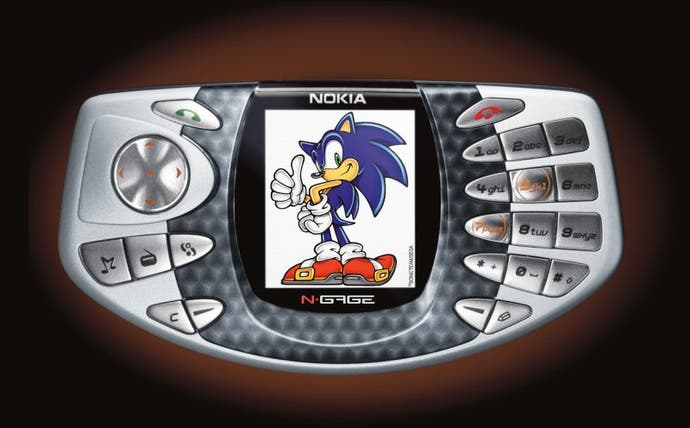
His verdict isn't far off our own opinion of the N-Gage at present. It's a fascinating device and a bold move by Nokia into a new market, but it's also horribly flawed in a number of crucial ways. The tiny screen, the lack of analogue controls, the need to remove the battery to change games, the lack of a volume control - all of these smack of lazy design and a fundamental failure to understand that the needs of a game device are different from the needs of a phone. N-Gage promises a game console, and what it delivers is a standard Series 60 mobile phone with a swish logo and a decent d-pad.
We can only hope that Nokia learns from these problems. Every time we speak to the company, we become more convinced that N-Gage is very much a "version 1.0" product, and that new versions are not far away. It's a terrible shame that unlike Microsoft, Nokia has completely failed to listen to some of the key criticisms which the industry has been giving it for months prior to the launch of the device, and that with the exception of better developer support, the system launching on October 7 is every bit as badly flawed as the one we saw at the London Eye in early Spring.
That said, the combination of a phone and a game console still offers absolutely massive potential for a killer app - if Nokia will allow it to be developed. A high quality turn based strategy game with SMS-based multiplayer would be a killer app for many people; a really good 2D platform game would impress others. However, to make these things happen, Nokia may need to drop the 3D dream, at least to some degree, and make the difficult admission that its device simply isn't suitable for a lot of 3D content.
For now, we're in two minds as to whether we'd use an N-Gage as our primary mobile device. On the one hand, it's a relatively competent phone and plays some quite decent games - but each of the flaws outlined in this review is like a nail in the coffin of the device, and it's compounded by the fear that we'd be left without a phone because we'd wasted the battery life playing games. Ultimately, N-Gage falls between a rock and hard place. There are much better phones and much better handheld game platforms out there, and in the absence of real killer apps, we're simply not that desperate to sacrifice the functionality available to us in order to reduce the gadget count in our pockets.
An average score is the only fair score to give the N-Gage right now. The device isn't bad by any means, but many of its flaws are not just niggles, they're real showstoppers - and while the software line-up also isn't bad by any means, there's no true killer application in there. Nokia needs to think very hard about whether it's really committed to the games industry, and whether the people who planned this device really understood what they were undertaking to do in the first place.

